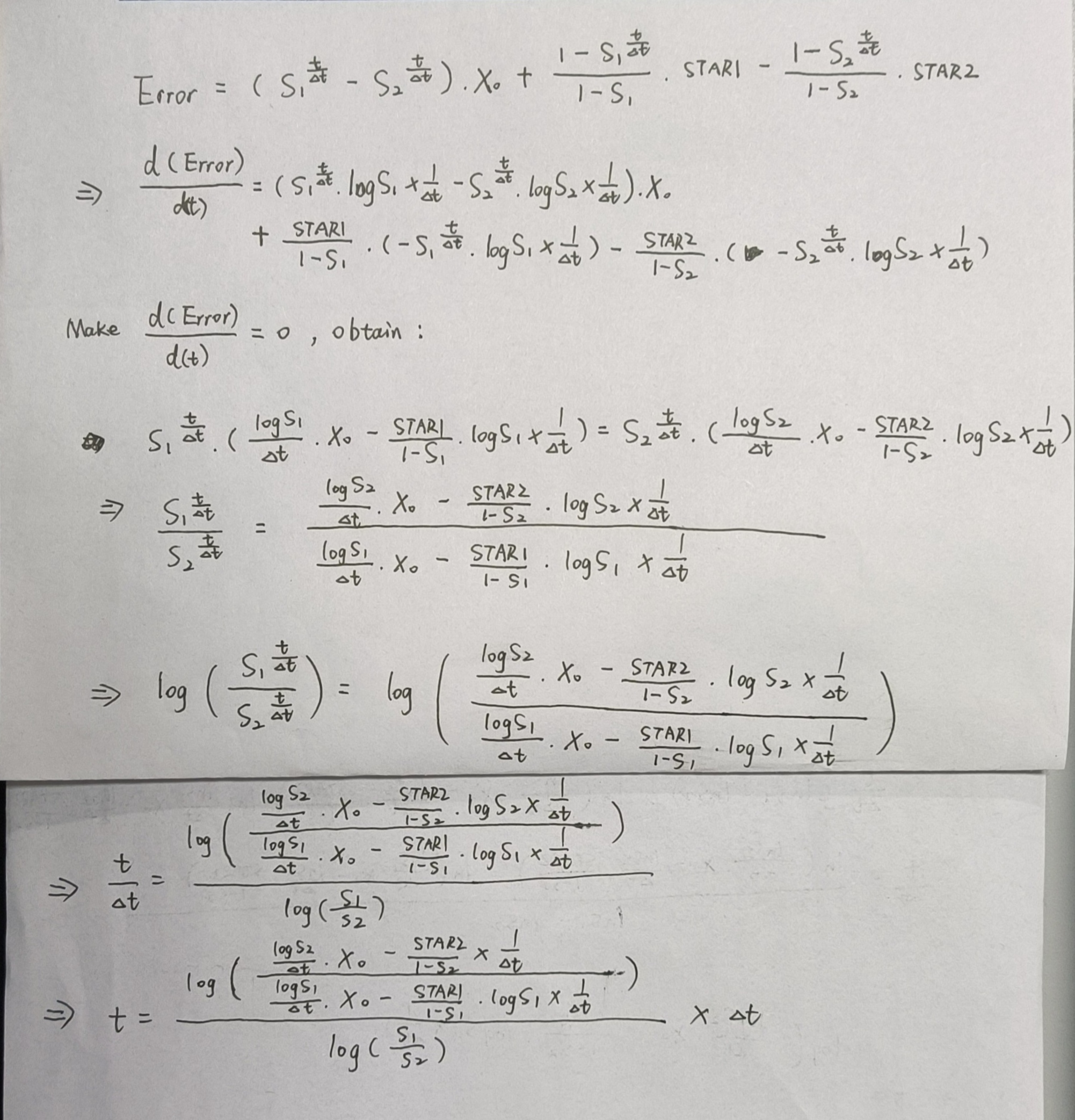I want to transform the formula into the relationship between t and dt (i.e. the left side is the variable t, and the right side is the formula containing all variables dt), so I have manually derived the following:
 The code is as follows:
The code is as follows:
{r = 22, l = 2 10^-1, c = 1 10^-4, vi = 24};
\[CapitalDelta]vi = 0;
A = {{0, -1/l}, {1/c, -1/(r c)}};
G = Inverse[A];
B = {1/l, 0};
S1 = Inverse[DiagonalMatrix[{1, 1}] - dt*A + 1/2*dt*dt*A . A];
S2 = Inverse[DiagonalMatrix[{1, 1}] - dt*A];
STAR1 = S1 . G . (B*vi + G . B*\[CapitalDelta]vi/dt) -
G . (B*(vi + \[CapitalDelta]vi) + G . B*\[CapitalDelta]vi/dt);
STAR2 = S2 . G . (B*vi + G . B*\[CapitalDelta]vi/dt) -
G . (B*(vi + \[CapitalDelta]vi) + G . B*\[CapitalDelta]vi/dt);
X0 = {0, 0};
t = MatrixLog[(MatrixLog[S2] . X0/dt -
Inverse[DiagonalMatrix[{1, 1}] - S2] . STAR2 . MatrixLog[S2]/
dt) . (MatrixLog[S1] . X0/dt -
Inverse[DiagonalMatrix[{1, 1}] - S1] . STAR1 . MatrixLog[S1]/
dt)] . Inverse[MatrixLog[S1 . Inverse[S2]]]*dt;
t /. dt -> 0.00006
Obviously, the formula contains X0, which is a vector that prevents MatrixLog from working properly